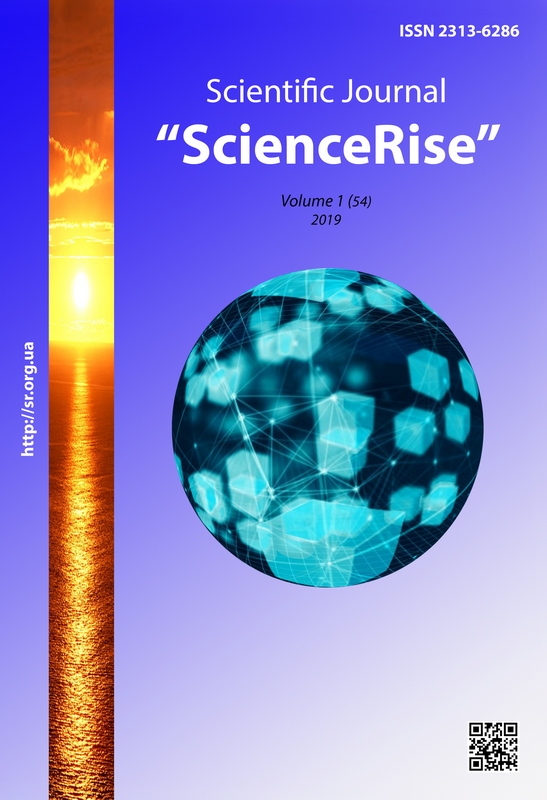Surface composition of the Co-Cr based alloys after different lab denture treatments using auger electron spectroscopy
DOI:
https://doi.org/10.15587/2313-8416.2019.155454Słowa kluczowe:
surface treatment, Co-Cr based dental alloys, Auger Electron Spectroscopy, artificial salivaAbstrakt
The aim of this work is analysis of dental Co-Cr-based alloy surface chemical composition after several technological procedures adopted in the dental practice using Auger Electron Spectroscopy (AES). This analysis was performed after casting the alloy samples were subjected to the following sequential treatments: cutting on by the diamond wheel, electric-spark cutting and grinding, electropolishing, exposure in artificial saliva after 2 days after electropolishing
Bibliografia
Gibon, E., Amanatullah, D. F., Loi, F., Pajarinen, J., Nabeshima, A., Yao, Z. et. al. (2016). The biological response to orthopaedic implants for joint replacement: Part I: Metals. Journal of Biomedical Materials Research Part B: Applied Biomaterials, 105 (7), 2162–2173. doi: http://doi.org/10.1002/jbm.b.33734
Wataha, J., Schmalz, G. (2009). Dental alloys. Biocompatibility of dental materials. Berlin-Heidelberg: Springer, 221–254. doi: http://doi.org/10.1007/978-3-540-77782-3_8
Podrez-Radziszewska, M., Haimann, K., Dudziński, W., Morawska-Soltysik, M. (2010). Characteristic of intermetallic phases in cast dental CoCrMo alloy. Archives of Foundry Engineering, 10 (3), 51–59.
Al Jabbari, Y. S. (2014). Physico-mechanical properties and prosthodontic applications of Co-Cr dental alloys: a review of the literature. The Journal of Advanced Prosthodontics, 6 (2), 138–145. doi: http://doi.org/10.4047/jap.2014.6.2.138
Kretz, E., Berthod, P., Schweitzer, T. (2018). Corrosion Behavior in a Neutral Artificial Saliva of Several Binary Co-Cr Alloys with Various Chromium Contents. Journal of Dental and Craniofacial Research, 3 (1). doi: http://doi.org/10.21767/2576-392x.100021
Ionita, D., Golgovici, F., Mazare, A., Badulescu, M., Demetrescu, I., Pandelea-Dobrovicescu, G.-R. (2018). Corrosion and antibacterial characterization of Ag-DLC coatingon a new CoCrNbMoZr dental alloy. Materials and Corrosion, 69 (10), 1403–1411. doi: http://doi.org/10.1002/maco.201810147
Huang, P., López, H. F. (1999). Athermal ε-martensite in a Co–Cr–Mo alloy: grain size effects. Materials Letters, 39 (4), 249–253. doi: http://doi.org/10.1016/s0167-577x(99)00022-1
Petrov, Y. N., Prokopenko, G. I., Mordyuk, B. N., Vasylyev, M. A., Voloshko, S. M., Skorodzievski, V. S., Filatova, V. S. (2016). Influence of microstructural modifications induced by ultrasonic impact treatment on hardening and corrosion behavior of wrought Co-Cr-Mo biomedical alloy. Materials Science and Engineering: C, 58, 1024–1035. doi: http://doi.org/10.1016/j.msec.2015.09.004
Vickerman, J. C., Gilmore, I. S. (Eds.) (2009). Surface Analysis: The Principal Techniques. John Wiley & Sons, Ltd. doi: http://doi.org/10.1002/9780470721582
Powell, C. J., Jablonski, A., Tilinin, I. S., Tanuma, S., Penn, D. R. (1999). Surface sensitivity of Auger-electron spectroscopy and X-ray photoelectron spectroscopy. Journal of Electron Spectroscopy and Related Phenomena, 98-99, 1–15. doi: http://doi.org/10.1016/s0368-2048(98)00271-0
Baran, G. (1984). Auger Chemical Analysis of Oxides on Ni-Cr Alloys. Journal of Dental Research, 63 (1), 76–80. doi: http://doi.org/10.1177/00220345840630012001
Leinenbach, C., Eifler, D. (2006). Fatigue and cyclic deformation behaviour of surface-modified titanium alloys in simulated physiological media. Biomaterials, 27 (8), 1200–1208. doi: http://doi.org/10.1016/j.biomaterials.2005.08.012
##submission.downloads##
Opublikowane
Numer
Dział
Licencja
Copyright (c) 2019 Mykhaylo Vasylyev, Svetlana Voloshko, Petr Gurin

Utwór dostępny jest na licencji Creative Commons Uznanie autorstwa 4.0 Międzynarodowe.
Our journal abides by the Creative Commons CC BY copyright rights and permissions for open access journals.
Authors, who are published in this journal, agree to the following conditions:
1. The authors reserve the right to authorship of the work and pass the first publication right of this work to the journal under the terms of a Creative Commons CC BY, which allows others to freely distribute the published research with the obligatory reference to the authors of the original work and the first publication of the work in this journal.
2. The authors have the right to conclude separate supplement agreements that relate to non-exclusive work distribution in the form in which it has been published by the journal (for example, to upload the work to the online storage of the journal or publish it as part of a monograph), provided that the reference to the first publication of the work in this journal is included.

